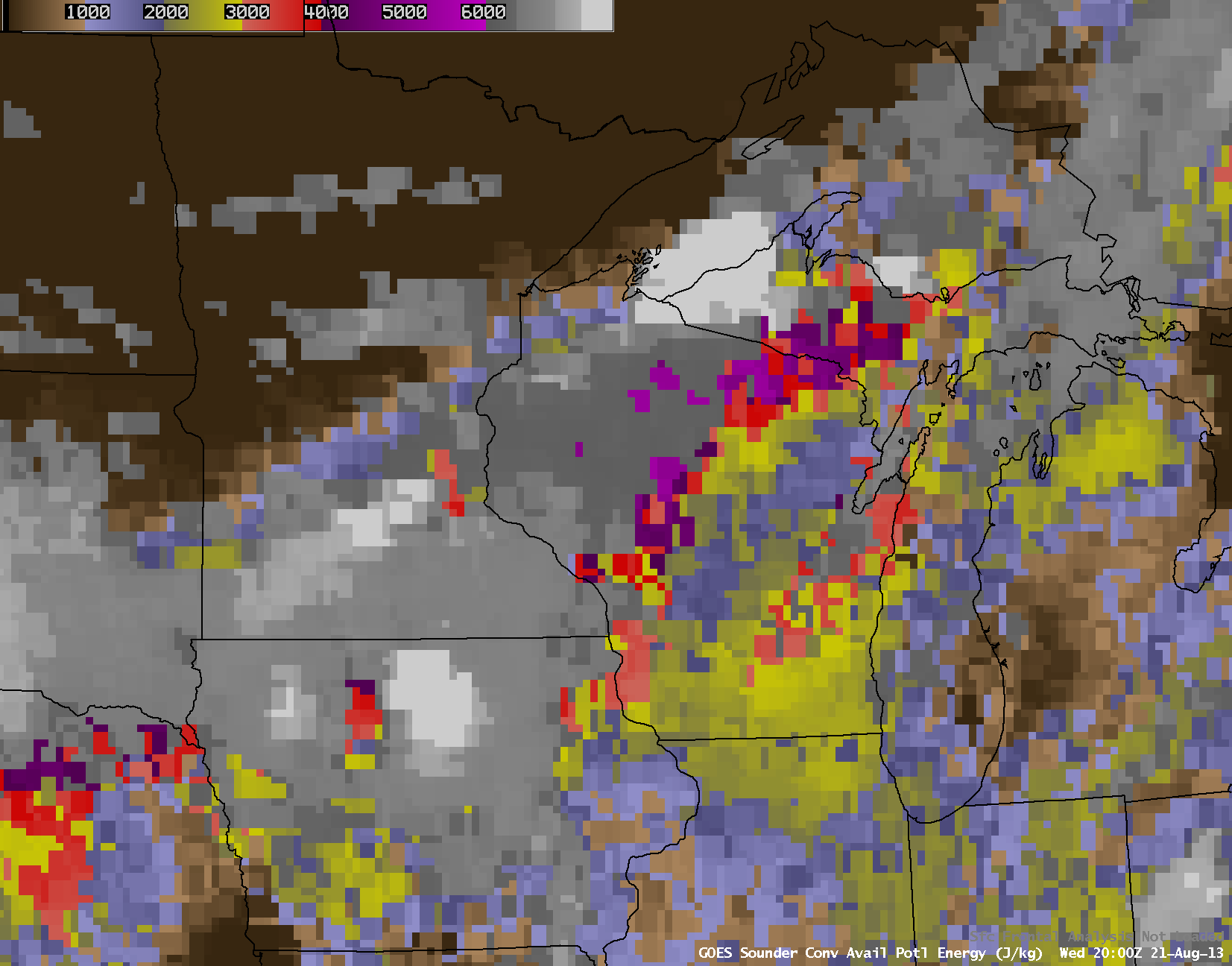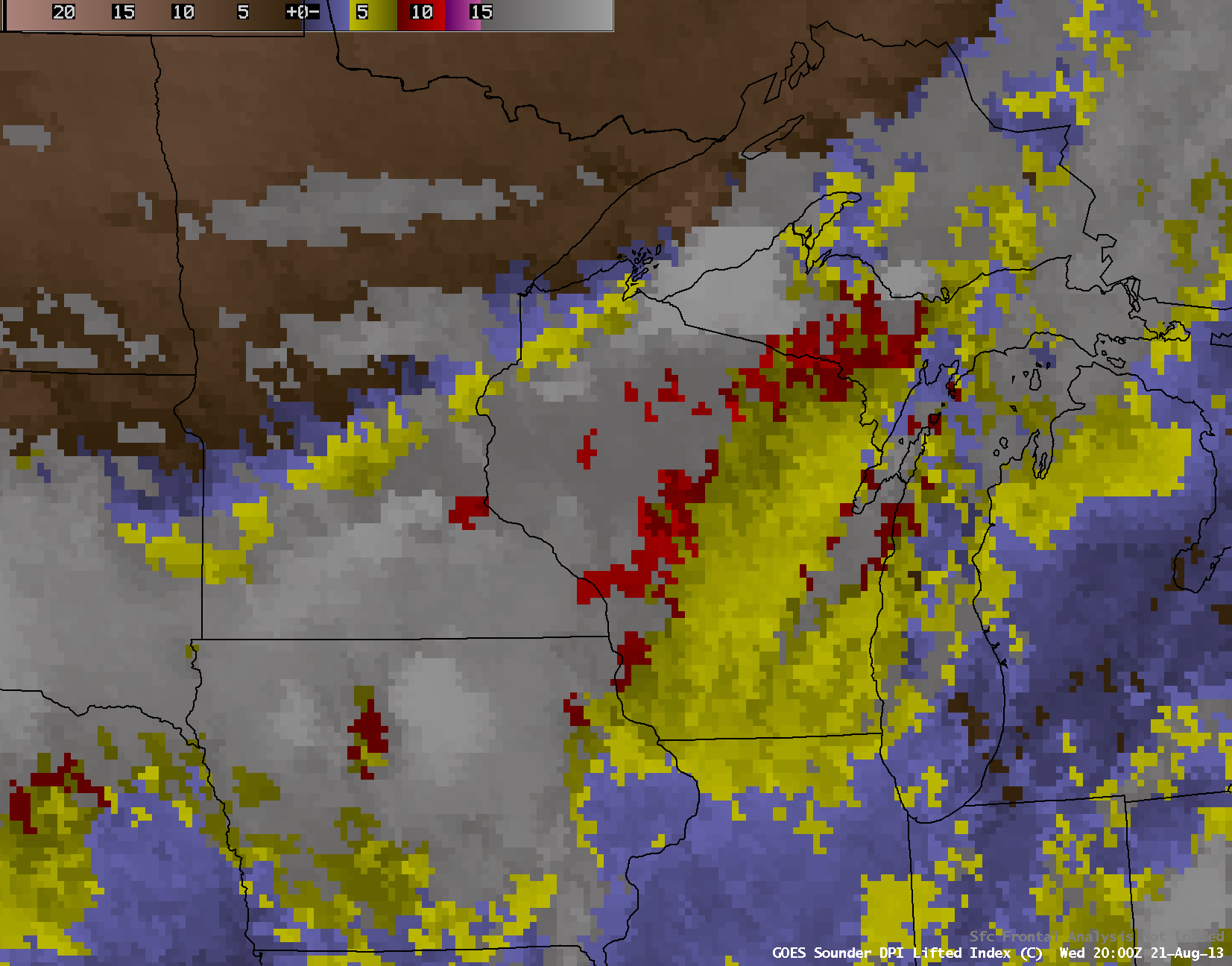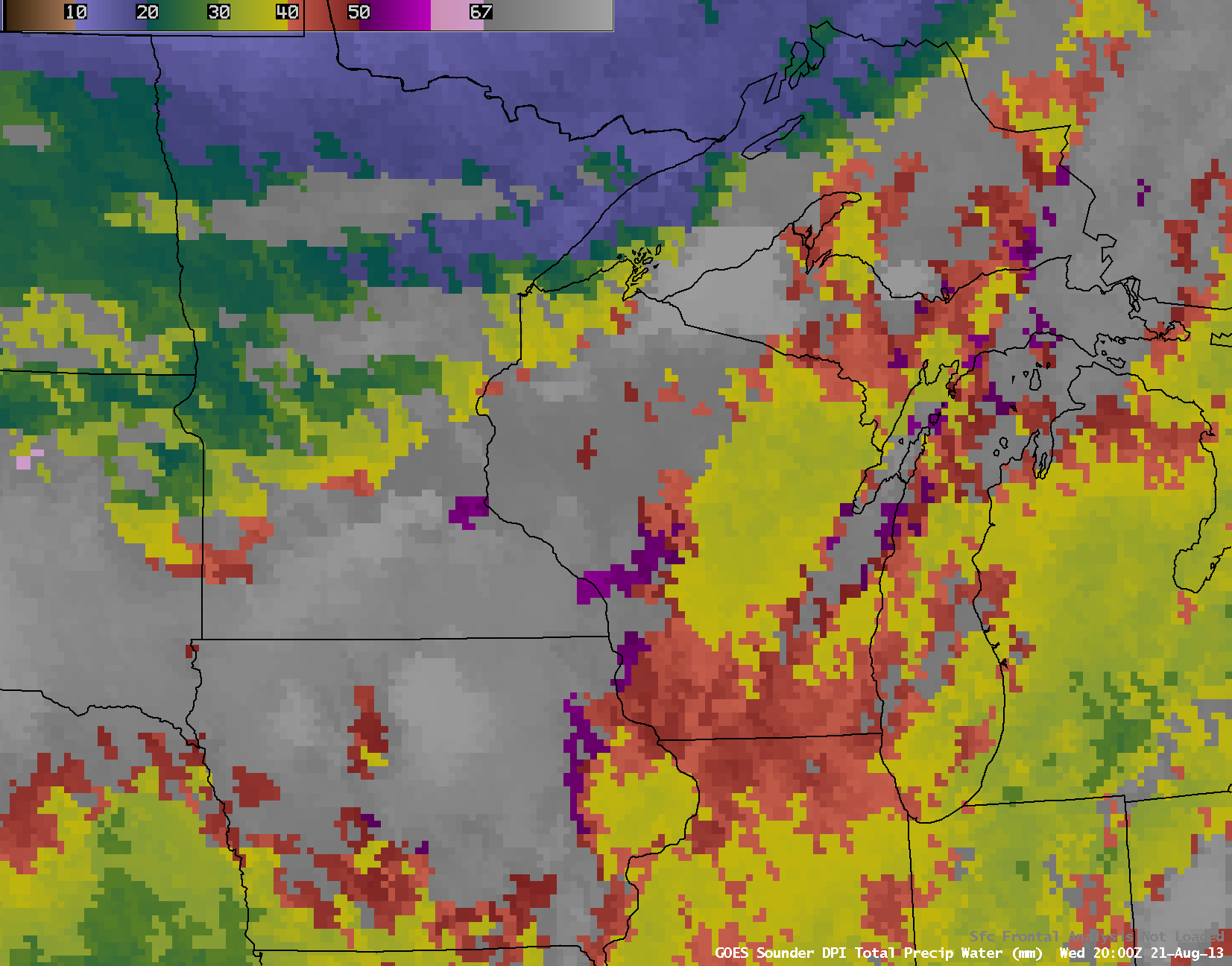SRSO-R Imagery of convection over the Upper Midwest
A cold front moving through Wisconsin triggered severe convection (SPC storm reports) on 21 August 2013. GOES-14 SRSO-R data gives a compelling look at the convective development at 1-minute intervals. Because of the satellite position, the rear inflow into the convection near Rice Lake, WI, is very apparent.
It is useful to compare the SRSO-R views of the convection from GOES-14 (30-second imagery will be available with GOES-R) to the routine scanning strategy used by GOES-13. That comparison is shown below. Routine scanning is unable to capture the very dynamic nature of rapidly evolving convection.
GOES-14 (left, SRSO-R) and GOES-13 (right) 0.63 µm visible channel images (click image to play animation)
Even Rapid Scan Operations (RSO) imagery (GOES-13 was in RSO during this event) can also miss important details, especially at times when GOES-East is doing a full-disk scan (at 20:45 UTC, for example) and no imagery is available for 30 minutes. The loop below compares SRSO views of this system (top) to RSO (middle) to standard 15-minute scanning (bottom). GOES-R will have the capability simultaneously to scan globally and in designated mesoscale sectors.
GOES-14 (SRSO-R, top; RSO, middle; standard, bottom) 0.63 µm visible channel images (click image to play animation)
GOES-13 sounder Derived Product Imagery (DPI) of the Lifted Index (above, available at this site) and Convective Available Potential Energy (below) readily shows the unstable airmass supporting the convection.

GOES-13 sounder Convective Available Potential Energy (CAPE) product (click image to play animation)
Total Precipitable Water (available at this site), below, shows moisture pooling along the approaching front.



